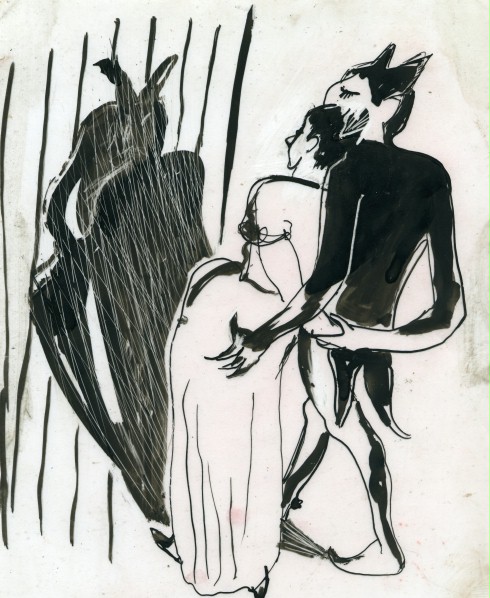EMIL SCHUMACHER
WOYZECK AND MEPHISTOPHELES
- THEATRE ART WORKS
OF THE 1940'S
From 1949 onwards, Schumacher – in association with the artists’ group „junger westen“ which he had helped found – illustrated scenes for the theater program of the Ruhrfestspiele in Recklinghausen, for plays by e.g. William Shakespeare, Johann Wolfgang von Goethe, Georg Büchner, or William Saroyan.
WOYZECK AND MEPHISTOPHELES
- THEATRE ART WORKS
OF THE 1940'S
The early representational illustrations correspond with Schumacher’s post-expressionist painting style of the time. Developed in the late 1940s, the illustrations are not representative for the artist’s oeuvre. Instead, they stand for the early, short creative phase after WWII during which the painter and graphic artist once more went in search of his own style. As the illustrator of concise scenes, as the interpreter of literary originals, which he first understands intellectually to then translate them into his own art, Schumacher demonstrates his artistic abilities to the fullest. The following developments in his oeuvre are not least based in the graphic aplomb he shows here.
Emil Schumacher developed his painting style since the late 1940s – first towards the abstraction of the so-called informel of the 1950s, which helped him towards his early international breakthrough, in the U.S.A. among others. Systematically and with his own intense expressiveness, he followed his path and reached a personal style that is characterized by the experimental use of color and material as well as the combination of abstraction and representationalism.
Before this background, these representational ink drawings on x-ray film take on an especially interesting position in Schumacher’s oeuvre. They are on public display for the first time in this exhibition.

Emil Schumacher
WOYZECK AND
Mephistopheles
- Theatre Art Works
Of The 1940's
November 22, 2011-
April 29, 2012

